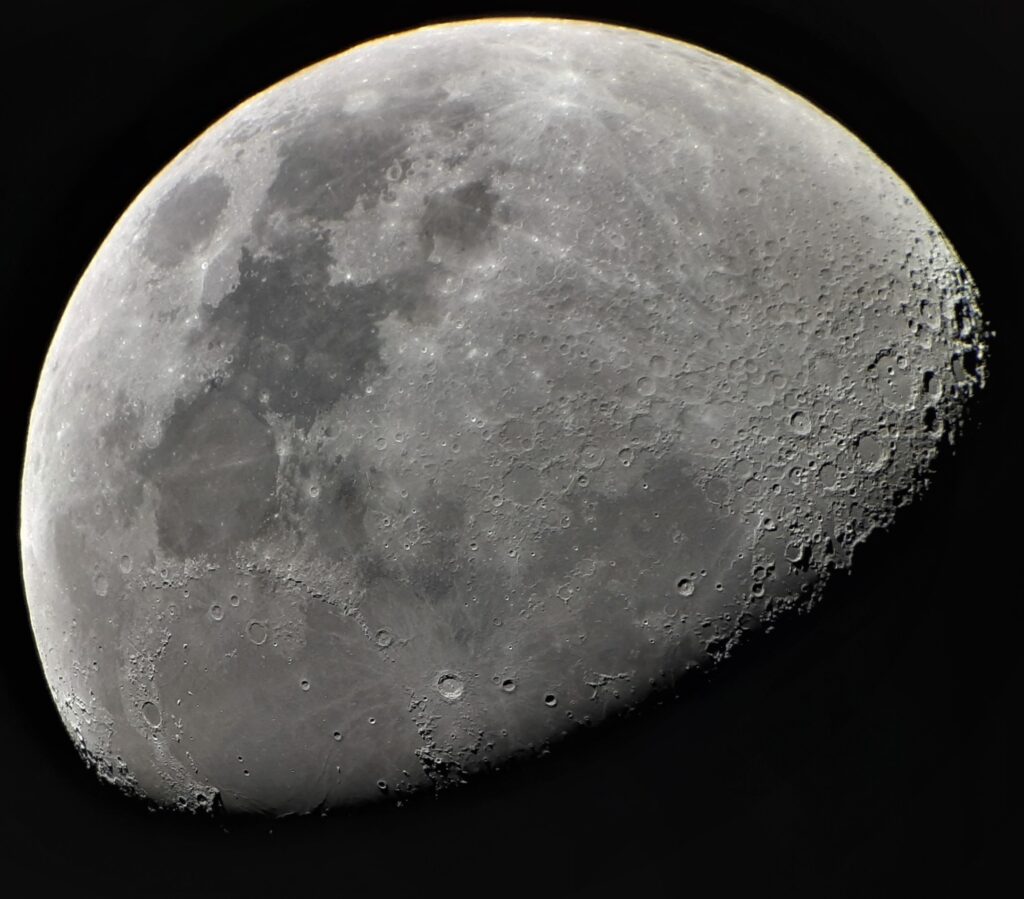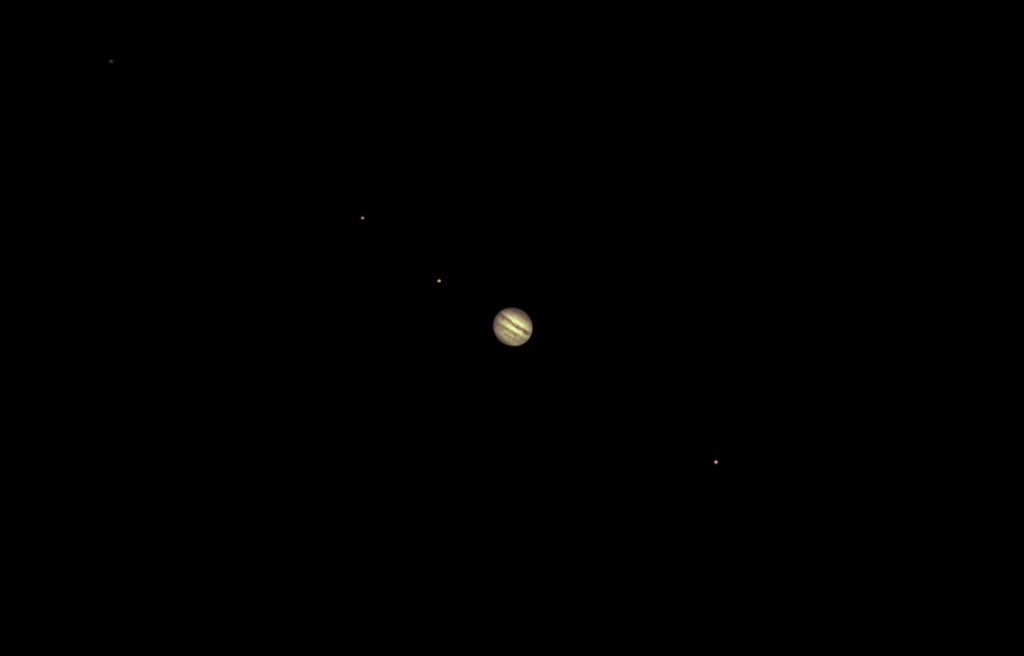Introduction to Dobsonian Telescopes
Dobsonian telescopes have carved a niche for themselves in the world of amateur astronomy. Introduced by John Dobson in 1965, these telescopes are celebrated for their simplicity, affordability, and impressive performance, particularly when observing deep-sky objects like nebulae and galaxies.
Their design focuses on maximizing the optics rather than complex and costly mounts, making them an excellent choice for beginners eager to explore the night sky without a steep learning curve.
What Makes Dobsonian Telescopes Ideal for Star Gazing?
The hallmark of a Dobsonian telescope lies in its Newtonian reflector design combined with an altazimuth mount. This setup allows for straightforward, intuitive operation without involving complex equatorial mounts or tracking systems. The simplicity of the Dobsonian design prioritizes a large aperture, which is crucial for gathering light and enhancing the visibility of faint celestial bodies.
Key Advantages Over Other Telescope Types
Dobsonian telescopes offer several advantages that distinguish them from other types. Firstly, their cost-effectiveness is unparalleled; with more investment directed towards building larger apertures, Dobsonians provide excellent light-gathering capabilities at a lower price point.
Additionally, their intuitive manual operation makes them accessible to all, from children to adults. With choices ranging from tabletop models to full-sized versions, Dobsonians cater to users with different needs, offering portability and ease of setup.
Best Dobsonian Telescopes
Best Overall
The Apertura AD8 is widely recognized as the best Dobsonian telescope for beginners due to its exceptional combination of user-friendly features and high-quality optics, making it an excellent entry point into the world of amateur astronomy. One of its key attributes is the comprehensive array of accessories included in the package, such as a dual-speed Crayford focuser for precision focusing and a SuperView 30mm eyepiece. These enhancements are valued at approximately $300 and significantly elevate the observational experience, offering a substantial advantage over similarly priced telescopes. Moreover, the Apertura AD8’s ease of collimation ensures that beginners can maintain optimal optical performance with minimal effort, enabling hassle-free and enjoyable stargazing sessions right from the beginning.
The robust build quality of the Apertura AD8, coupled with its potential for customization through additional eyepiece upgrades, makes it a versatile telescope that grows alongside the user’s expanding astronomical interests. Featuring a stable tilt mechanism with a clutch and a user-friendly design that favors manual rather than technological dependency, the telescope delivers an authentic observational experience. Users acclaim its ability to provide clear and detailed views of celestial wonders such as globular clusters and nebulae. Positive feedback from its community of users further underscores its reliability and excellence, cementing its status as the best Dobsonian telescope for beginners seeking a high-quality, affordable entry into the exploration of the cosmos.
Apertura AD8: Best 8 Inch Dobsonian Telescope Options

In the vast world of amateur astronomy, the Apertura AD8 emerges as a superior choice among 8-inch Dobsonian telescopes. This comprehensive guide will explore the features and benefits of the Apertura AD8, highlighting why it stands out for both novice and experienced astronomers.
Comprehensive Accessories
One of the standout features of the Apertura AD8 is its broad range of included accessories, which differentiate it from other telescopes in its category. The package comprises a dual-speed Crayford focuser, essential for precise focus adjustments, and a SuperView 30mm eyepiece. These elements significantly enhance the observational experience, offering approximately $300 worth of superior accessories compared to similarly priced competitors.
Ease of Use

A significant advantage of the Apertura AD8 is its ease of collimation, which is crucial for maintaining the telescope’s optical performance. This feature is particularly beneficial for beginners who may lack experience in aligning telescopes, ensuring enjoyable and straightforward stargazing sessions from the start.
Upgrade Potential
The potential for upgrades is another appealing aspect of the Apertura AD8. As users seek to expand their observational horizons, the telescope’s design accommodates additional eyepieces to achieve varying magnifications, allowing for a tailored viewing experience that can grow with the user’s interests.
Build Quality and Features
The Apertura AD8 is praised for its sturdy build quality. Features such as the clutch on the tilt mechanism enhance stability and usability during observations. The telescope includes an innovative system that balances the optical tube with heavier eyepieces effortlessly by adjusting the center of gravity using a hex wrench, which is included in the package.
Manual Operation Preference
For those who favor manual operation over reliance on smartphone technology for astronomical observation, the Apertura AD8 is particularly suitable. It provides the opportunity to stargaze without technological dependencies, offering a focused and authentic observational experience.
Positive User Feedback
The Apertura AD8 is highly regarded by its users, with many noting the effectiveness of its auxiliary tools and the high quality of observations made possible by the included accessories. This positive feedback underscores the telescope’s reliability and exceptional performance.
Observational Capabilities
The superior optics of the AD8 allow for detailed viewing of various celestial objects. Users have reported success in observing globular clusters such as M13 in the Hercules constellation, and the Ring Nebula M57 in Lyra, with impressive clarity and detail, even in light-polluted areas. These capabilities are indicative of the telescope’s robust design and efficient light-gathering capabilities.
In conclusion, the Apertura AD8 stands out as a top choice among 8-inch Dobsonian telescopes. Its ease of use, comprehensive accessory package, and potential for upgrades make it an ideal option for both beginners and seasoned astronomers. The telescope’s positive reviews and proven performance ensure a rewarding stargazing experience. For those looking to explore the cosmos with a balance of portability and performance, the Apertura AD8 offers an excellent solution. Whether viewing the intricate beauty of nebulae or the captivating double stars, the Apertura AD8 delivers an unparalleled astronomical adventure.
Apertura AD10: Best 10 Dobsonian Telescope for Deep Sky Viewing
If you’re embarking on your astronomical journey, the Apertura AD10″ Dobsonian Telescope might just be your ideal companion. Recently hailed by AstroBackyard as the best choice for beginners, the Apertura AD10 shines for its balance of performance and convenience.
The Perfect Blend of Size and Portability
The AD10 is often referred to as the “Goldilocks” model of the Apertura AD series. It boasts a 10-inch aperture, providing dazzling views of celestial wonders without the bulkiness found in larger models. Weighing 20 pounds less than the AD12, it strikes a harmonious balance between ample aperture and manageable size.
Stellar Views Await
The AD10’s 10″ aperture opens up a universe of possibilities, from the breathtaking rings of Saturn to Jupiter’s equatorial belts. It allows for detailed views of Mars’ ice caps and even the Cassini Division in Saturn’s rings. Beyond our solar system, the AD10 uncovers thousands of celestial objects, including galaxies, nebulae, star clusters, and double stars.
Loaded with Accessories
The Apertura AD10 comes with everything you need right out of the box. Included are a right-angle, image-correcting 8×50 finder scope, two eyepieces, a laser collimator, and a moon filter. The moon filter enhances contrast, making lunar observing more rewarding. The laser collimator ensures your optical system remains perfectly aligned for optimal performance.
Quality Construction
Crafted with precision, the AD10 features a high-quality parabolic mirror, finished with aluminum and silicon dioxide for 93% reflectivity. Its steel optical tube, coupled with a dual-speed Crayford-style focuser, assures durability and precision. Adjustments are simple, thanks to intuitive hand-knobs and the laser collimator.
User-Friendly and Versatile
Dobsonian telescopes are renowned for ease of use, and the AD10 exemplifies this. Its straightforward setup, devoid of complicated electronics, is perfect for stargazers who appreciate simplicity. The integrated Dobsonian base allows for smooth, 360º movement, encouraging seamless exploration of the night sky.
A Complete Package
A standout feature is the inclusion of additional accessories worth over $200, such as a primary mirror cooling fan and a versatile eyepiece adapter. Two high-quality eyepieces offer diverse views, while the moon filter enhances lunar observations. A four-slot eyepiece tray ensures easy access while observing.
Unmatched Warranty and Support
The AD10 is backed by the Apertura Absolute Warranty, offering two years of protection against defects. Post-warranty, the telescope qualifies for a Three-Year Accident Replacement Program, with the warranty being transferrable. This robust support underscores the commitment to quality and customer satisfaction.
In summary, the Apertura AD10″ Dobsonian Telescope is a remarkable choice for those eager to explore the universe. Its exceptional features, ease of use, and comprehensive warranty make it an ideal investment for aspiring astronomers.
Apertura AD12: Alternative Dobsonian Telescopes (12″)
The Apertura AD12 Dobsonian telescope impresses with its substantial 12″ primary mirror, offering an extraordinary view of deep-sky objects. Perfect for astronomy enthusiasts seeking performance and value, its massive aperture delves into celestial wonders, from galaxies and nebulae to the finer details of Jupiter’s belts and Saturn’s rings. Despite being the largest in the AD series, its well-thought-out design ensures smooth altitude and azimuth movements, enhancing the viewing experience. Teamed with the Apertura lifting straps or the Roll EZ kit, the AD12 becomes a surprisingly manageable powerhouse for any stargazer’s collection.
Crafted from quality materials, the AD12 features a robust construction, ensuring durability and high performance. Its parabolic mirror boasts 93% reflectivity, complemented by an adjustable mirror cell for perfect alignment using the included laser collimator. The dual-speed Crayford-style focuser enhances precision, while a full set of accessories, such as a cooling fan, multiple eyepieces, and a moon filter, enrich the observational journey. Such thorough inclusivity reduces additional costs, making this telescope a comprehensive package ready to explore the universe straight out of the box.
The AD12’s innovative Dobsonian base, providing easy 360º horizontal rotation and smooth altitude adjustments, enhances its user-friendly nature. Its stability assists in effortless object tracking, a critical feature for both novice and experienced astronomers. Combining simplicity with top-tier optical prowess, the AD12 is a testament to Apertura’s commitment to quality and affordability. Protect your investment further with the Apertura Absolute Warranty, offering peace of mind for your cosmic adventures.
Practical Tips for Dobsonian Telescope Owners
Owning a Dobsonian telescope provides an exciting opportunity to explore the cosmos directly from your backyard or on the go. With their user-friendly design and cost-effectiveness, these telescopes are ideal for observers of all experience levels. Here’s how you can enhance your stargazing experience with a Dobsonian telescope:
Collimation: Ensuring Peak Performance
Collimation is crucial for maintaining the optimal functionality of your Dobsonian telescope. This process involves aligning the primary and secondary mirrors precisely, which is vital for clear and sharp images. Misalignments, even small ones, can blur or distort your observations.
- Routine Checks: Regularly check collimation, especially after moving the telescope.
- Tools: Invest in a collimation cap or laser collimator for accuracy.
- Learning Resources: Utilize online tutorials to master collimation, ensuring your telescope performs at its best.
Use Apps and Star Charts
Leverage technology to make your telescopic experience richer and more informed. Stargazing apps and star charts are excellent companions for amateur astronomers.
- Stargazing Apps: Use apps like SkySafari and Stellarium to identify celestial objects in real-time with augmented reality and detailed celestial maps.
- Digital Star Charts: These offer an overview of visible night sky objects and guide your discovery throughout the year.
- Tech Integration: For computerized models, some apps automate slewing to specific celestial coordinates.
Trial and Error
Selecting the right Dobsonian telescope involves understanding your observing needs and constraints. Testing different models helps identify the telescope that best suits you.
- Hands-On Experience: Try out various Dobsonian models through astronomy clubs or friends to assess differences in weight, stability, and complexity.
- Evaluate Your Needs: Consider aperture size, manual versus computerized operation, and portability when choosing a model.
- User Comfort: Ensure the telescope’s features match the primary user’s abilities and preferences, opting for lightweight or more advanced models as appropriate.
How to Store Your Dobsonian Telescope Safely
Proper storage is crucial for maintaining the condition of your Dobsonian telescope. Store it in a dry, dust-free environment to prevent damage and ensure longevity. Consider these practices:
- Use a Cover: Protect your telescope from dust and scratches with a dedicated cover.
- Temperature Control: Avoid storing your telescope in environments with extreme temperatures or humidity. A controlled indoor environment is ideal.
- Stable Placement: Keep your telescope in a stable position to prevent accidental knocks or falls that could misalign the optics.
Dobsonian Telescope Astrophotography Tips
While Dobsonian telescopes are crafted mainly for visual observation, they can also serve as an entry point into the world of astrophotography with some creative adjustments. One straightforward method is using smartphone adapters to attach your phone to the telescope’s eyepiece. This setup allows your device’s camera to capture the tethered view through the telescope. Ensuring a stable position is crucial to minimize vibrations that can blur images, especially when photographing faint celestial objects.
For those aiming to capture details of dimmer stars and nebulae, employing longer exposure times is essential. Although Dobsonians lack computerized tracking to compensate for Earth’s rotation, manually holding the setup as still as possible allows for more light collection, enhancing object clarity. Additionally, using basic stacking techniques, where multiple images of the same object are combined with software to reduce noise, can significantly improve image quality.
Experimenting with a digital camera can also elevate your astrophotography results. With the right adapter, cameras offer more control over exposure and ISO settings, allowing precise adjustments for optimal image capture. Despite the non-tracking setup leading to challenges like star trails with long exposures, employing short exposures and stacking can produce sharp, breathtaking images. With a bit of ingenuity, Dobsonian telescopes become a rewarding gateway into capturing the stunning vistas of the night sky, mixing the joy of astronomy with creative photography.
Observing the Night Sky with Your Dobsonian Telescope
Dobsonian telescopes provide unparalleled opportunities to observe a variety of celestial objects. Whether you’re targeting planets or seeking out deep-sky wonders, the following insights can guide your exploration.
What Can You See with a 10 Inch Dobsonian Telescope?
A 10-inch Dobsonian telescope elevates your stargazing experience, bringing the solar system and beyond into vivid detail. Its substantial aperture is perfect for revealing the intricate features of gas giants like Jupiter and Saturn. Expect to see Jupiter’s cloud bands, Great Red Spot, and Galilean moons with exceptional clarity, while Saturn’s rings and atmospheric tints display beautifully, particularly during periods of opposition.
The telescope shines when observing deep-sky objects, capturing faint light to unveil the grandeur of the Andromeda Galaxy and the luminescent Orion Nebula. Lesser-known star clusters and nebulae also emerge with clarity, turning them from faint patches into intricate structures. Whether admiring the sparkling Pleiades or the spirals of the Whirlpool Galaxy, a 10-inch Dobsonian offers a rich and fulfilling viewing experience, captivating both novice and experienced astronomers.
What Can You See with an 8 Inch Dobsonian Telescope?
An 8-inch Dobsonian telescope provides stellar views of the cosmos, balancing impressive capabilities with ease of use. This size is particularly adept at delivering clear, detailed observations of the planets. Jupiter’s cloud bands and its colorful Great Red Spot, as well as Saturn’s stunning rings, are prominently visible, offering a rich visual treat as these celestial giants bring their defining features to the forefront under your gaze.
Beyond planetary observation, an 8-inch Dobsonian is also well-suited for deep-sky exploration. Its adequate light-gathering ability reveals fascinating objects such as the Hercules Globular Cluster, an ancient congregation of stars that appears as a compact, shimmering sphere. Moreover, the enigmatic Ring Nebula can be discerned, showcasing its iconic donut shape. With a bit of practice, these enthralling deep-sky objects transition from obscured swaths to captivating spectacles, making an 8-inch Dobsonian a versatile tool for both planetary and deep-sky enthusiasts.
Dobsonian Telescope Accessories Worth Mentioning
While Dobsonian telescopes are powerful tools for astronomical observation on their own, carefully chosen accessories can significantly enhance your viewing experience. Introducing quality accessories will allow you to explore the night sky with improved precision and diversity, taking full advantage of what your telescope can truly offer.
Quality Eyepieces
The eyepiece is your main interface with the cosmos, and investing in high-quality eyepieces can elevate your observational experience tremendously. By incorporating eyepieces with a variety of magnification levels, you can shift seamlessly between wide-field views for scanning larger areas of the sky and high magnification for zooming in on intricate celestial details.
For example, lower-magnification eyepieces are ideal for locating and framing broad objects like galaxies and star clusters, while higher-magnification eyepieces let you analyze intricate features on planets or tight star clusters with greater detail.
Barlow Lens
A Barlow lens is an invaluable accessory for achieving higher levels of magnification without the need to invest in additional eyepieces. This lens operates by effectively doubling—or even tripling—the magnification of any given eyepiece, allowing for detailed planetary observation and the exploration of smaller or more distant objects with clarity.
The advantage of a Barlow lens lies in its ability to expand your observational capabilities without overburdening your eyepiece collection, offering flexibility and economy for those diving deeper into the night sky.
Finderscope
Hunting down celestial objects in the vast expanse of the universe can be daunting, and a finderscope becomes a critical tool in navigating this challenge. Whether you choose a traditional optical finderscope or a modern red dot finder, these tools assist in accurately aligning your telescope to your desired object.
By providing a wider field of view than your main telescope, a finderscope allows for faster and more efficient targeting, ensuring you spend less time searching and more time observing your cosmic targets.
Light Pollution Filters
For astronomers operating in urban or suburban settings, light pollution can be a significant obstacle, obscuring faint celestial objects. Light pollution filters are designed to enhance contrast and visibility by selectively blocking out certain wavelengths of artificial light, making it easier to view nebulae and galaxies despite nearby urban lighting.
By improving contrast and reducing glare, these filters unlock the capability to see more detail and structure in your targets, providing a clearer and more gratifying observational experience.
